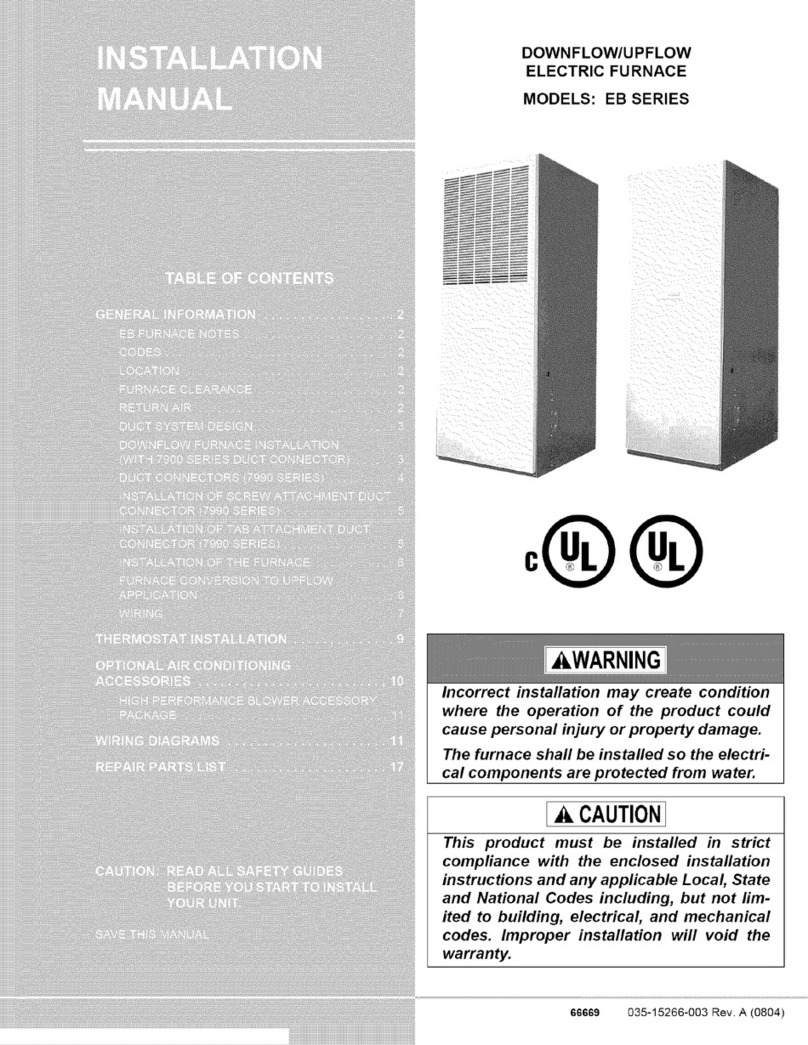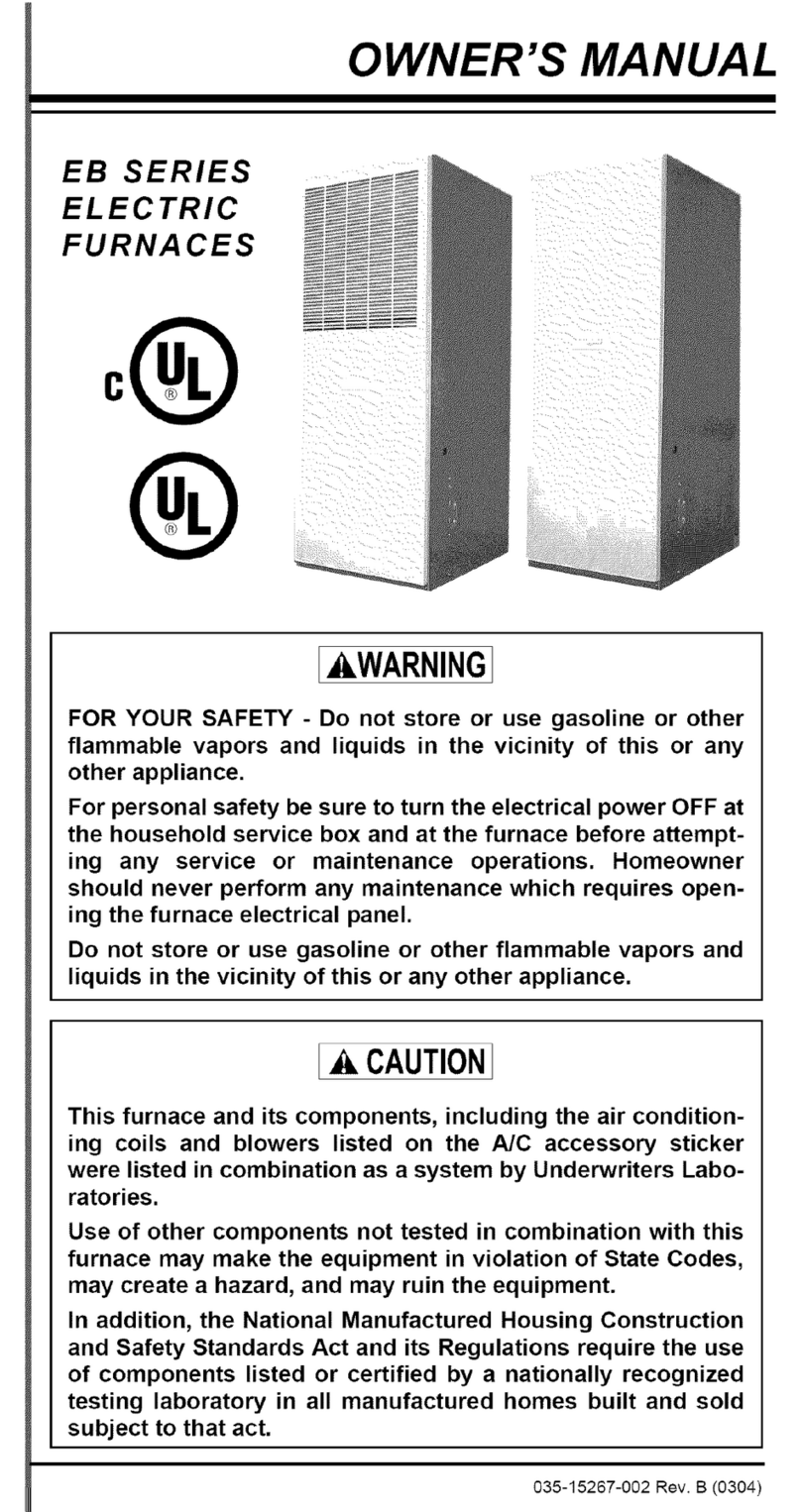
8
RETURN AIR REQUIREMENTS
CLOSET INSTALLATIONS
Figure 3 — Closet to Door Clearance — 6” or greater
CLOSET
FURNACE
DOOR
6” or greater —
Closet to Door
Clearance
Furnace to Closet Door Clearance —
Greater than 6 Inches
The closet door MUST have a minimum of 250
Square Inches of free area in the upper half of the
door.
If the opening for return air is located in the side-
wall and below the top of the furnace casing:
a. total side return must equal or exceed
350 sq. in. free area
b. 6” min. clearance must be provided on
thesidewherethereturnislocated
Return Air Grille Part No.
7900--- 286P/A — Almond
7900--- 287P/A — White
Return Air Closet Door Part No.
7900--- 8881 — Almond
7900--- 7771/C — White
c. 6” min. clearance must be
maintained in front of the furnace.
Additional Requirements
Additional requirements for floor and ceiling return system
for closet installed sealed combustion heating appliance
are given in the next paragraph.
Floor or Ceiling Return Air System
Floor or ceiling return air system for closet installed direct
vent forced air heating appliance.
Listed in the next paragraph are the conditions to be met by
Mobile Home Manufacturers to have U.L. acceptance of
in---floor or ceiling return air systems of closet installed di-
rect vent forced air heating appliances for Mobile Homes to
be sold in the United States.
A. The return---air opening into the closet, regardless of
location, is to be sized not less than specified on the
appliance’s rating plate.
B. If the return---air opening is located in the floor of the
closet (versus the vertical front or side wall), the open-
ing is to be provided with means to prevent its inadver-
tent closure by a flat object placed over the opening.
C. The cross---sectional area of the return duct system
(when located in the floor or ceiling of the mobile home)
leading into the closet is to be not less than that of the
opening specified on the appliance’s rating plate.
D. The total free area of openings in the floor or ceiling reg-
isters serving the return---air duct system is to be not
less than 150% of the size of the opening specified on
the appliance’s rating plate. At least one such register
is to be located where likelihood of its being covered by
carpeting, boxes, and other objects is minimized.
E. Materials located in the return duct system have a flame
spread classification of 200 or less.
F. N o n --- c o m b u s t i b l e p a n s h a v i n g o n e --- i n c h u p t u r n e d
flanges are located beneath openings in the floor re-
turn duct system.
G. Wiring materials located in the return duct system con-
form to Article 300---22 (b&c) of the National Electric
Code (ANSI C1 / NFPA ---70).
H. Gas piping is not run in or through the return duct sys-
tem.
I. The negative pressure in the closet as determined by
test with the air---circulating fan operating at high heat-
ing speed and the closet door closed is to be not more
negative than minus 0.05---inch water column.
J. For floor return systems, the mobile home manufacturer
or installer shall affix a prominent marking on or near
the appliance where it is easily read when the closet
door is open. The marking shall read:
WARNING
HAZARD OF ASPHYXIATION
DO NOT COVER OR RESTRICT FLOOR OPENING
or equivalent.































